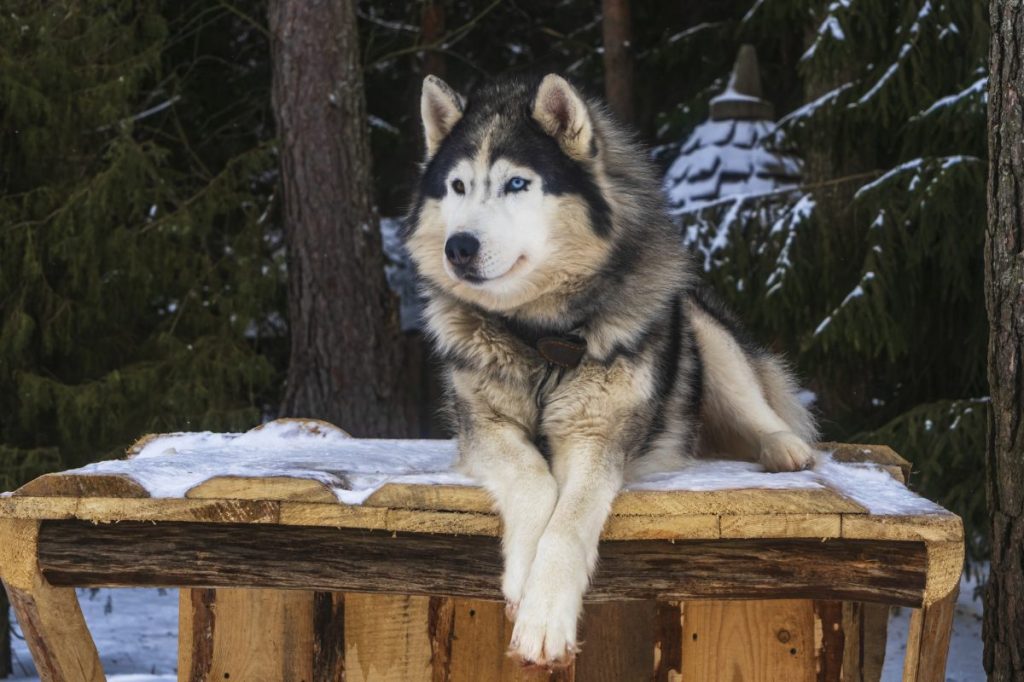For centuries, the wild spirit and profound beauty of wolves have captured the human imagination. These apex predators are admired for their intelligence, strength, and social structures. If you’re one of many who are mesmerized by these majestic creatures, owning a wolf or a wolf hybrid might seem like a dream. Fortunately, there are several wolf dog breeds that offer the aesthetics and, in some cases, the genetics of wolves. Below, we’ve curated a list of wolf-like dogs, hybrid wolf dogs, wolfdogs, wolfhounds, and even breeds capable of standing their ground against wolves themselves.
What dog breeds are the closest to a wolf?
The intrigue of owning a dog who retains the appearance and some characteristics of a wolf is undeniable. So, what dog breeds have wolf in them, and which have the closest DNA to a wolf? Let’s take a closer look at 10 breeds known for their striking similarities to wolves.
Siberian Husky
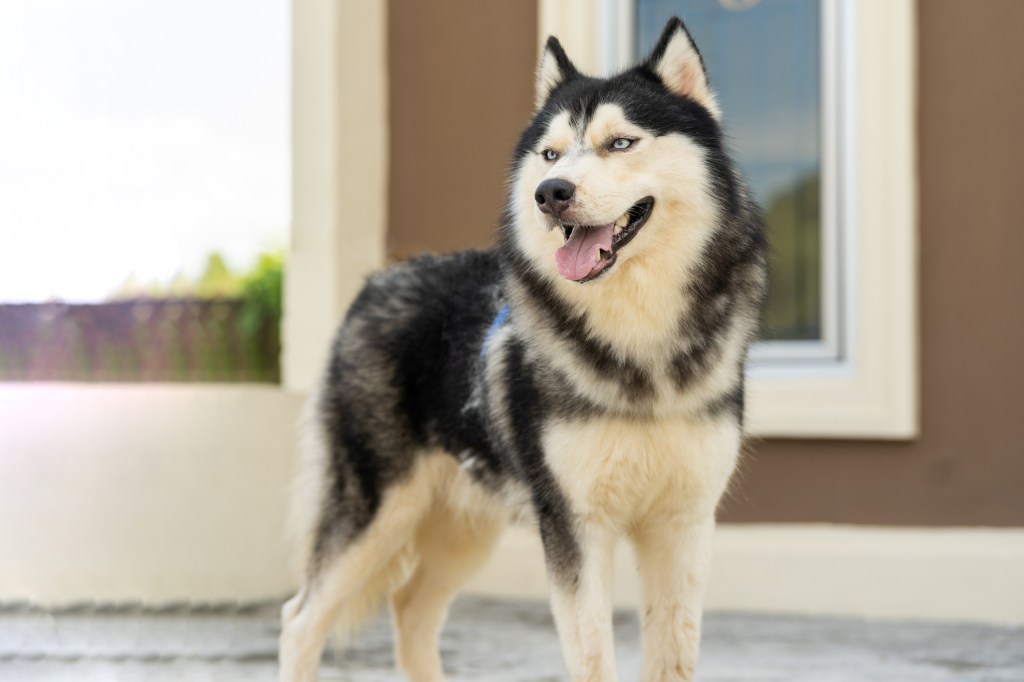
The Siberian Husky is almost always a dream dog for wolf lovers. With a characteristic chatty howl that can be heard frequently, this breed is a powerhouse of a dog. Developed as a working breed, the Husky has changed little, even as more people adopt them as companion animals. Many Husky parents walk five to 10 miles a day with their dog. The breed is also a notorious escape artist. If you want to have one of these gorgeous pets as your forever companion, be sure you’re physically and emotionally ready for an experience that’s like having an extremely powerful, triathlon-running toddler.
Alaskan Malamute
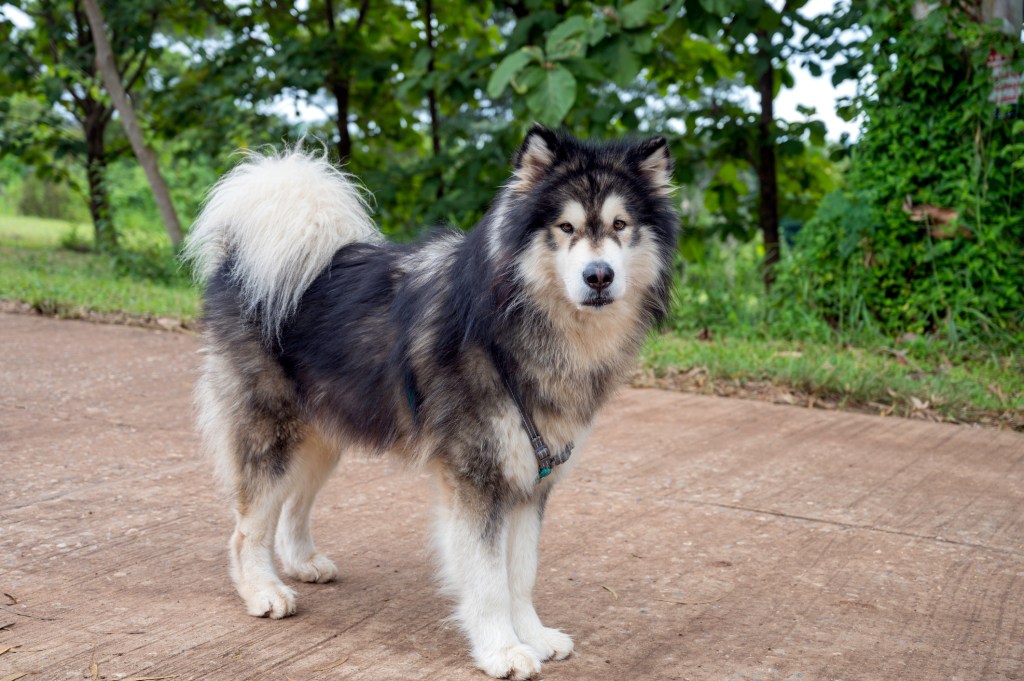
While the Alaskan Malamute may frequently be confused for the Siberian Husky, Mal fans would argue they’re completely different dogs. The Malamute is much larger and stockier than the Husky, and they have a thicker coat, too. Correspondingly, as another sled-pulling working dog, the Malamute’s energy requirements are similar to the Husky. They pretty much never stop. Looking for a working dog, or love to run for hours a day? The Malamute could be an amazing fit. Conversely, for couch potatoes, this breed will simply drive you crazy, even if they are beautiful.
German Shepherd Dog
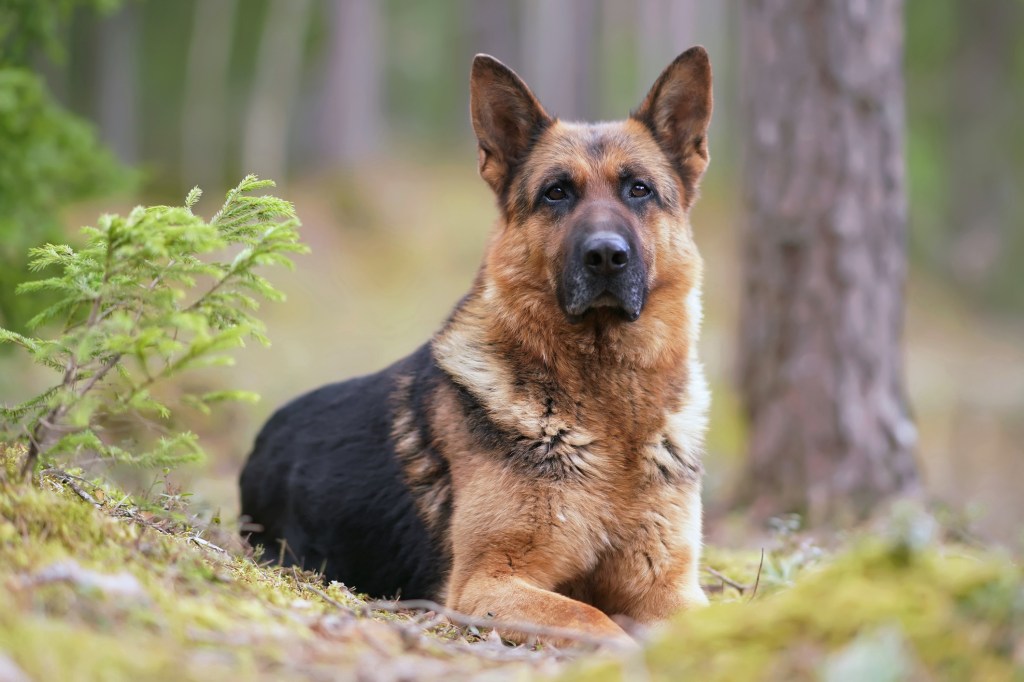
Long beloved as one of America’s favorite breeds, the German Shepherd Dog (GSD) is known for its intelligence and unwavering loyalty. The image that pops to mind for most people when thinking of the GSD is the classic tan-and-black pattern. For wolf lovers, there are many color variants that bring a wilder look to the breed. Those looking for a wolf-like dog might seek out a German Shepherd in a silver-and-black, solid-black, or solid-white variant. The GSD is no easy breed, either. Expect to walk a few miles a day here, too. Then again, they do tend to mellow out in their later years, while a senior Husky will almost always still crave a run even in their “final stretch.”
For those who find characteristics of all three of the first breeds mentioned here appealing, give the Utonagan a look. This mixed breed is a cross between the German Shepherd, Alaskan Malamute, and Siberian Husky. For lovers of all three breeds, this combination has a more wolf-like appearance, along with the best traits of these three amazing dogs.
Tamaskan Dog
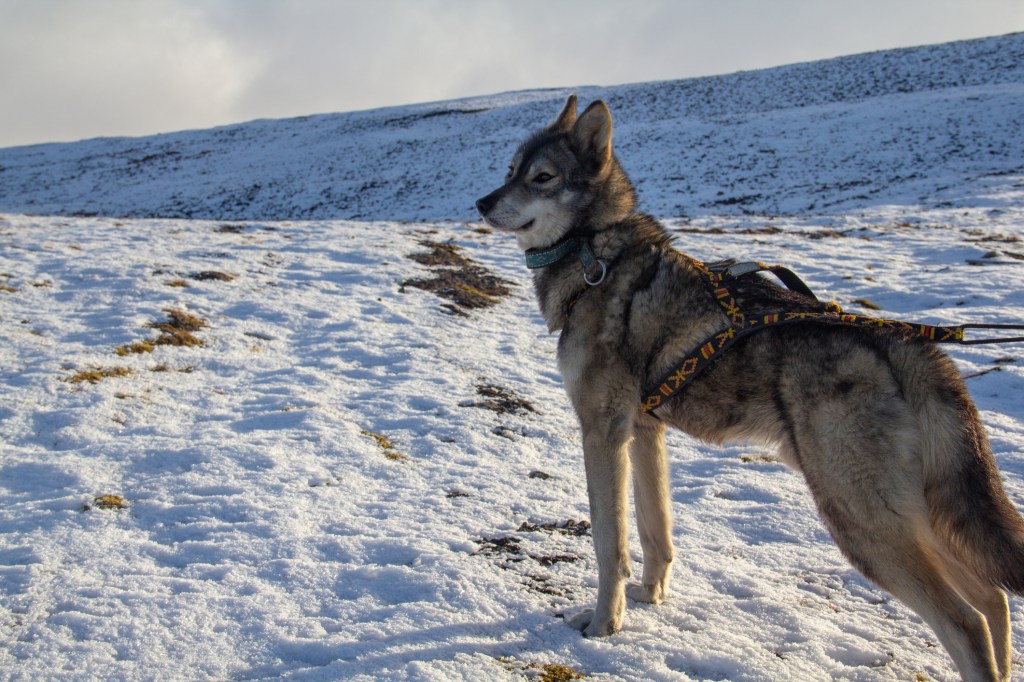
Although the Tamaskan dog breed is wonderful, you’re quite unlikely to find one up for adoption. Why? With only about 400 Tamaskan dogs in existence, it stands as one of the rarest dog breeds. If you’re willing to shell out for this breed, however, they’re known to be amazing pets. Unlike most high-energy Arctic breeds with wolf-like appearances, the Tamaskan dog has a more relaxed temperament and requires less intense exercise. Additionally, to the untrained eye, the mottled gray Tamaskan dog truly resembles a wolf.
Norwegian Elkhound

Known for playful antics and goofy howling, the Norwegian Elkhound is a medium-sized breed with a big personality. While they require ample exercise, their shorter legs can’t carry them quite as far as a Husky, so you don’t need to worry about daily three-hour hikes. With a surprisingly wolf-like face on a smaller body, they also have an adorable curly tail! This breed makes a great “single-person” dog due to their remarkable loyalty and devotion. Additionally, they can serve as fantastic watchdogs.
Shiloh Shepherd
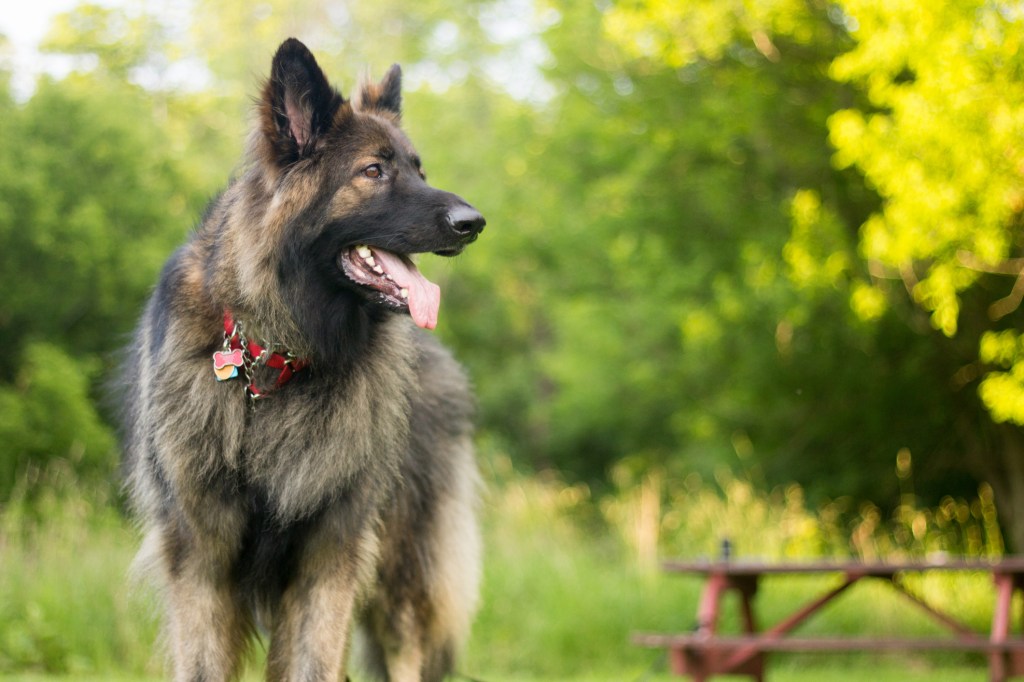
The Shiloh Shepherd may remind you of a few other breeds on this list, and that makes sense. The German Shepherd and Alaskan Malamute both are present in this breed’s ancestry. While similar in appearance — especially to the GSD — this breed is larger and is known to have a calmer temperament. That said, Shiloh Shepherds still need a lot of exercise, but you can expect them to be gentler and more willing to listen than an excitable Husky or Malamute.
Alaskan Klee Kai
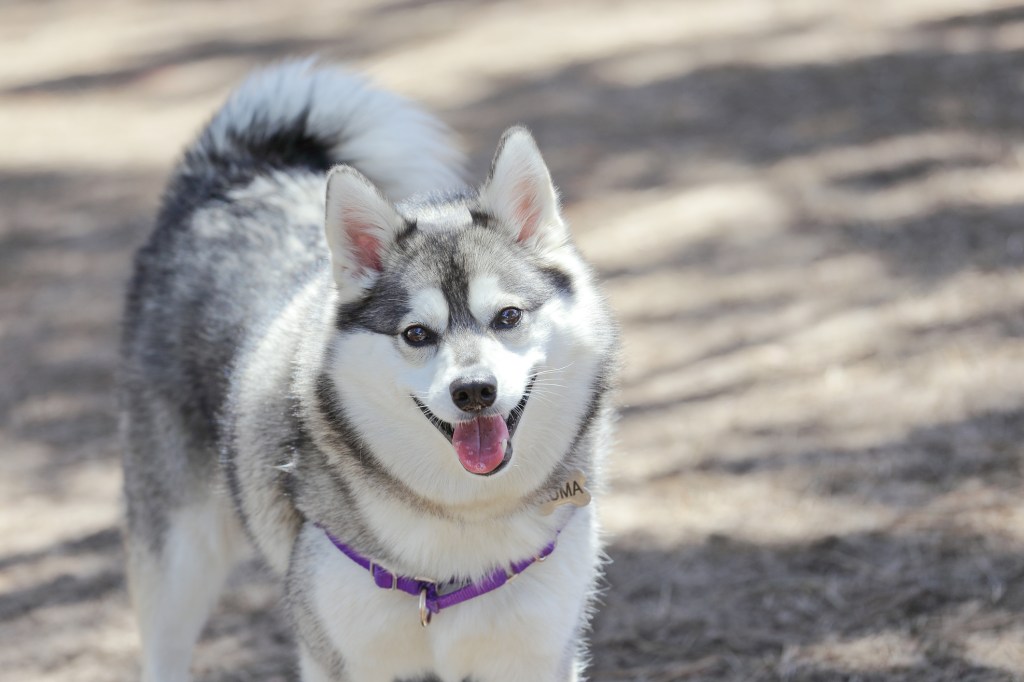
Alaskan Klee Kais are very similar in appearance to Alaskan sledding breeds like Huskies but have much more manageable exercise requirements. You can expect them to be mostly satisfied after a 40-minute walk, though some play sessions afterward are ideal. The Klee Kai was developed as a companion breed, not a working breed, so they’re a better fit for most day-to-day human routines. However, they are still best suited for an experienced dog parent since they are very vocal and emotionally needy. It’s also important to note that despite their small size, they rarely make good apartment dwellers.
American Eskimo Dog
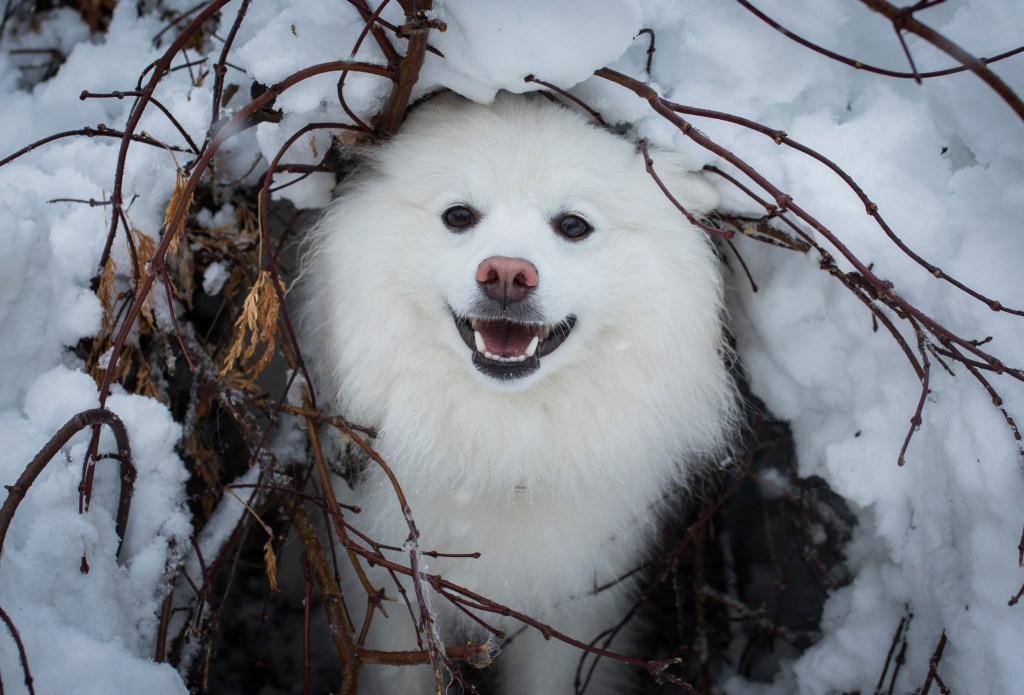
A member of the Spitz family, the fluffy American Eskimo Dog has high needs when it comes to grooming. Otherwise, this pup is a pretty laid-back member of the family. Only weighing 10 to 30 pounds, the American Eskimo Dog still manages to look like a little white wolf with their elegant features and thick coat. That said, this breed has a high prey drive, so avoid adopting if you have small pets or cats. Apart from that, these canines tend to get along well with just about everyone else, including kids and other dogs. Moreover, just like any breed, Eskies need some exercise, but their requirements are not particularly high. Accordingly, those without a craving for adventure can still find happiness with this pup at their side.
Bohemian Shepherd
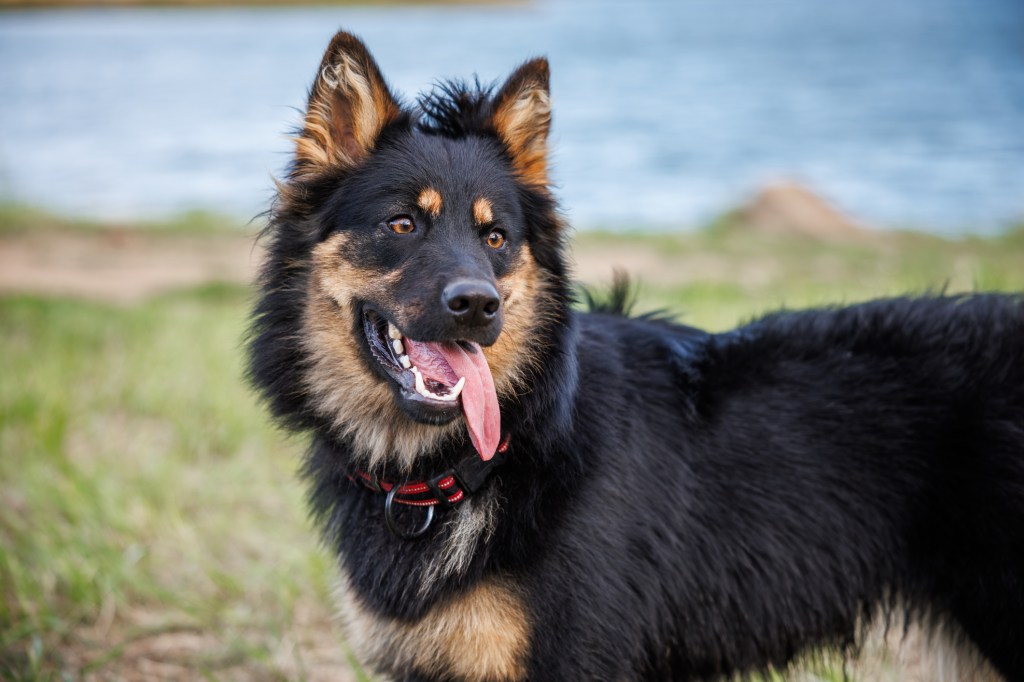
Although this breed is not as common as the beloved German Shepherd, they’re actually much older. The Bohemian Shepherd originated in the 1300s in the Czech Republic. Known for their gentle and loving nature, they make excellent family pets, particularly with children. Their daily need for exercise is easily met with a good run, ideally in a backyard where they can play. Moreover, managing their energy is straightforward, especially with active kids eager to participate in daily games of fetch.
Czechoslovakian Vlcak

The Czechoslovakian Vlcak — also known as the Czech Wolfdog — is easily the most wolf-like of all the breeds listed here. This breed was originally developed from dogs who had some wolf hybrid ancestry. So, while the breed is no longer hybridized with wolves, you can expect a wilder temperament. That’s not to say this breed is mean or bad, but rather that their exercise and emotional requirements are just very high. However, for those who are willing to put in the time, this beautiful dog breed can genuinely be mistaken for a wolf in both size and coloration, and their sharp minds are wolf-like, too.
What dog breeds can kill a wolf?
No single dog breed is specifically designed or guaranteed to kill a wolf. The disparity in size, strength, and pack instincts makes wolves formidable opponents for most domestic dog breeds. However, there are certain large and powerful breeds often mentioned for their abilities to stand a chance in confrontations with wolves under certain conditions, primarily in the context of guarding livestock.
Among these breeds, the Kangal Shepherd Dog from Turkey is frequently recognized for their strength, size, and protective instincts. Kangals display remarkable bravery and physical prowess. As such, they have been bred for centuries to guard sheep against formidable predators such as wolves and bears.
Another notable mention is the Caucasian Shepherd Dog, a breed with a long history of guarding livestock in the harsh terrains of the Caucasus Mountains, where encountering wolves is a common threat. These dogs are known for their massive size, strength, and thick coats that provide protection against bites.
That being said, it’s crucial to note that these encounters are highly dangerous and often fatal for the dog, wolf, or both. In reality, the aim of using guardian dogs is not to fight wolves. Rather, the hope is to deter wolves from attacking livestock through the dog’s imposing presence and assertive behavior, thus reducing the likelihood of direct confrontations. Engaging in combat with a wolf is always a last resort and not an indication of the intended purpose of these dog breeds.
What is the difference between a wolfdog and a wolfhound?
The term wolfdog refers to a hybrid animal that has both dog and wolf ancestry. The wolf content in these animals can vary greatly, leading to wide variability in their appearance and behavior. A wolfhound, on the other hand, is a type of dog bred for hunting wolves or resembling wolves in appearance, such as the Irish Wolfhound. Unlike wolfdogs, wolfhounds have no recent wolf ancestry and are considered domestic breeds.
Are wolfdogs good pets?
Perhaps none of the above wolf-like dog breeds feel like a good fit for you. Maybe you’re interested in adopting a wolfdog. Without a doubt, wolfdogs or pure wolves are simply a bad idea as pets. In many places, it’s illegal to be a wolf hybrid parent unless you are a zoo or similar organization. This means if your wolfdog is ever to escape or you can no longer care for them, your wolfdog will likely face euthanasia by any shelter. What’s more, even a pure wolf that’s captive-raised has a very low chance of survival in the wild. As such, releasing either a wolf or wolfdog is not a kind act but an act of cruelty.
What are the best wolfhound dog breeds for wolf lovers?
Since wolfdogs may not be the most ideal pets, here are some of the best wolfhound dog breeds that could fulfill your desire to have a dog with a wolf-like appearance and spirit.
Bankhar Dog

The Bankhar Dog or Mongolian Mastiff — indigenous to Mongolia — stands as a testament to ancient practices of living harmoniously with nature. These robust, resilient dogs were traditionally used by nomadic tribes to protect livestock from predators such as wolves. Arguably, the same can be said for many of the Mastiff dog breeds.
Bearing a majestic appearance that evokes images of wild ancestors, the Bankhar Dog embodies a mix of strength, intelligence, and a natural protective instinct. While not as commonly known outside their homeland, they are perfect for those enchanted by the lore of wolves and seeking a dog with a deep connection to their primeval roots.
Irish Wolfhound
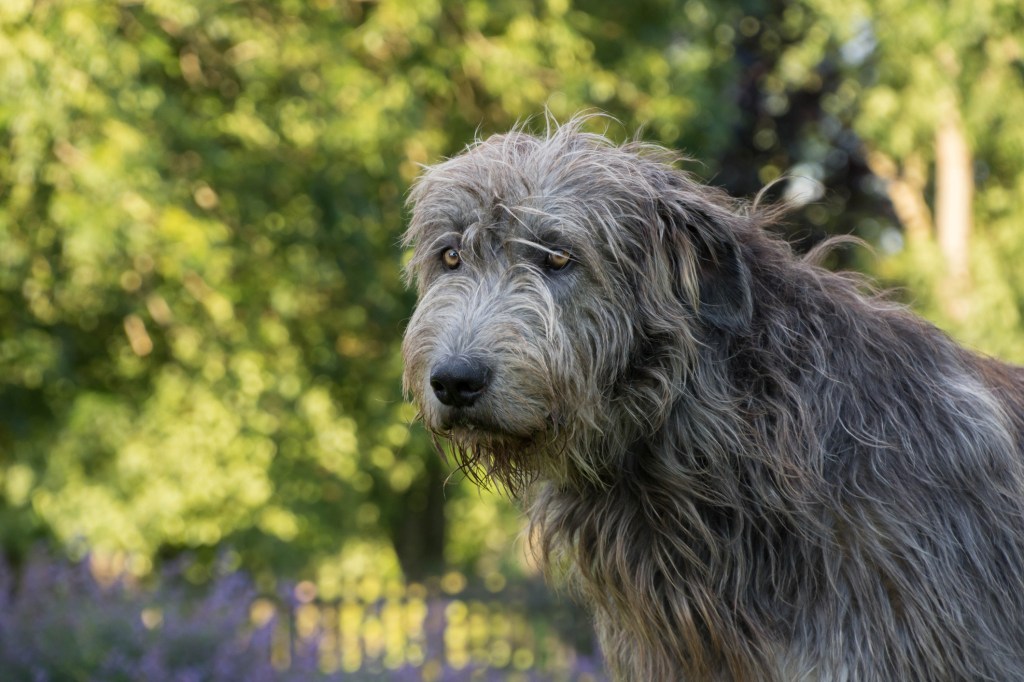
As one of the tallest dog breeds in the world, the Irish Wolfhound possesses a gentle giant demeanor alongside their wolfish traits. Known for their immense size, strong build, and rough coat, Irish Wolfhounds were historically bred for hunting wolves and elk. Today, they are celebrated for their friendly, patient, and loyal personalities. Despite their formidable size, they are incredibly gentle and get along well with children and other pets, making them fantastic family dogs for those with enough space to accommodate their large size.
Borzoi
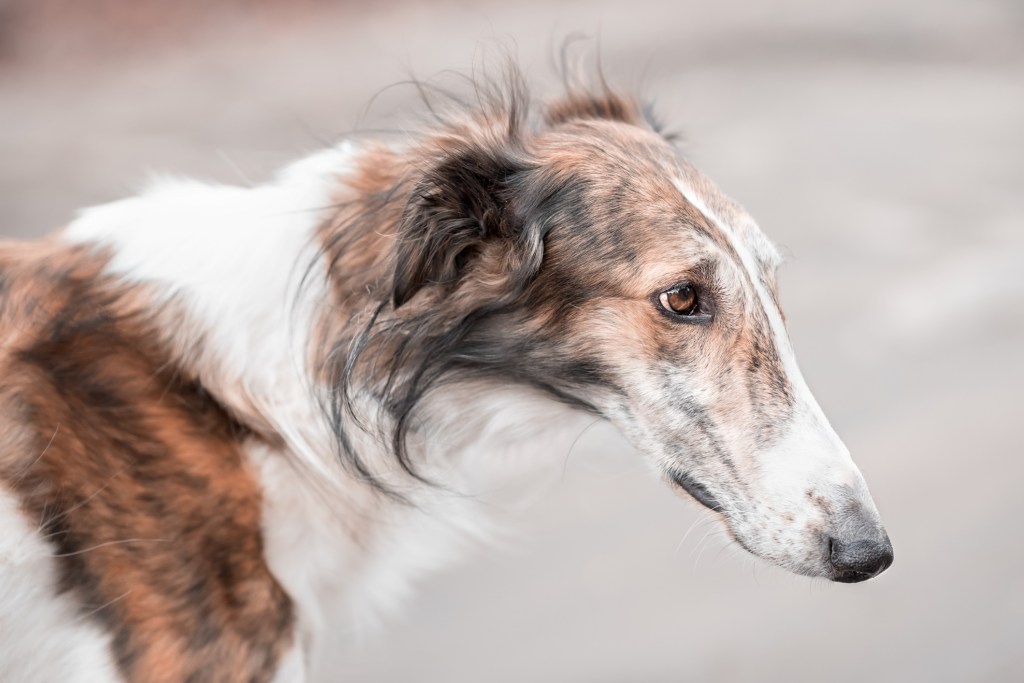
Borzois — also known as Russian Wolfhounds — are elegant, long-haired dogs who exude an air of aristocracy and grace, not unlike the wolves they resemble. They are incredibly fast and agile, with a slender, refined build that contributes to their graceful movements. The Borzoi’s coat, which can come in almost any color, along with their pointed ears and long muzzle, gives them a distinct, wolfish appearance. Even with their outstanding hunting capabilities, Borzois are affectionate and loyal pets who do well in calm, loving environments.
Scottish Deerhound
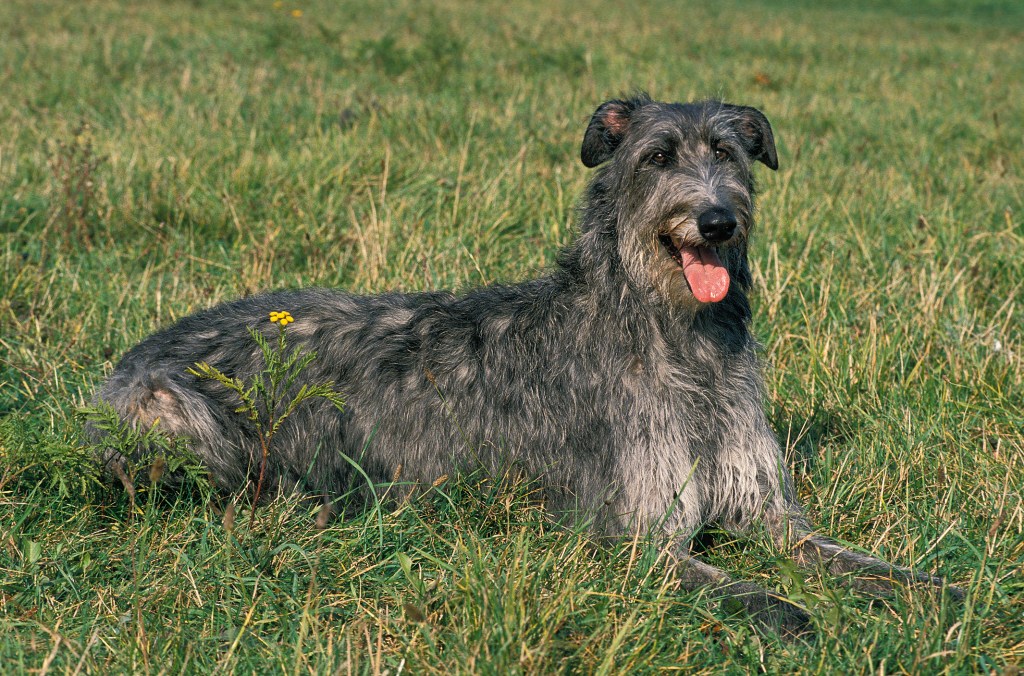
Closely related to the Irish Wolfhound, the Scottish Deerhound bears a striking resemblance to the rough-coated grey wolves of yore. They were originally bred for coursing red deer in the rugged highlands of Scotland. Not only are they majestic in appearance, but they are also known for their gentle and friendly nature. With a wiry and rough coat, these dogs share a wolf-like aesthetic that can capture the heart of any wolf admirer.
The fascination with wolf dog breeds
With their majestic appearance, wolf-like mannerisms, and deep-rooted loyalty, wolf-like dog breeds can provide remarkable companionship for the right owner. However, it’s crucial to remember that owning one of these magnificent animals comes with significant responsibilities. Their complex needs require a committed, experienced handler prepared to provide ample space, proper training, and socialization. If you’re drawn to the beauty and spirit of the wolf — and are ready to meet the challenges of ownership — a wolf dog breed or wolfhound could be an excellent addition to your life. The adoption of one may just bridge the wild heart of nature with the companionship of man’s best friend.
